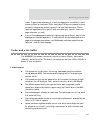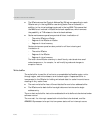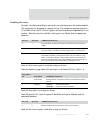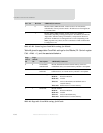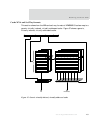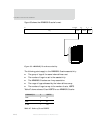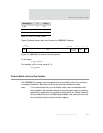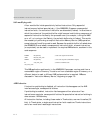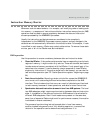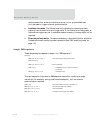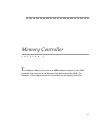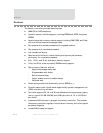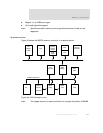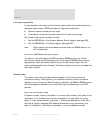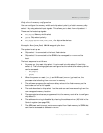
www.digiembedded.com
113
Working with the CPU
Instruction Memory Barrier
Whenever code is treated as data — for example, self-modifying code or loading code
into memory — a sequence of instructions called an instruction memory barrier (IMB)
operation must be used to ensure consistency between the data and instruction
streams processed by the ARM926EJ-S processor.
Usually the instruction and data streams are considered to be completely
independent by the ARM926EJ-S processor memory system, and any changes in the
data side are not automatically reflected in the instruction side. For example, if code
is modified in main memory, ICache may contain stale entries. To remove these stale
entries, part of all of the ICache must be invalidated.
IMB operation
Use this procedure to ensure consistency between data and instruction sides:
1 Clean the DCache. If the cache contains cache lines corresponding to write-back
regions of memory, it might contain dirty entries. These entries must be cleaned
to make external memory consistent with the DCache. If only a small part of the
cache has to be cleaned, it can be done by using a sequence of clean DCache
single entry instructions. If the entire cache has to be cleaned, you can use the
test and clean operation (see "R7: Cache Operations register," beginning on page
64).
2 Drain the write buffer. Executing a drain write buffer causes the ARM926EJ-S
core to wait until outstanding buffered writes have completed on the AHB
interface. This includes writes that occur as a result of data being written back
to main memory because of clean operations, and data for store instructions.
3 Synchronize data and instruction streams in level two AHB systems. The level
two AHB subsystem might require synchronization between data and instruction
sides. It is possible for the data and instruction AHB masters to be attached to
different AHB subsystems. Even if both masters are present on the same bus,
some form of separate ICache might exist for performance reasons; this must be
invalidated to ensure consistency.
The process of synchronizing instructions and data in level two memory
must be invoked using some form of fully blocking operation, to ensure that
the end of the operation can be determined using software. It is



